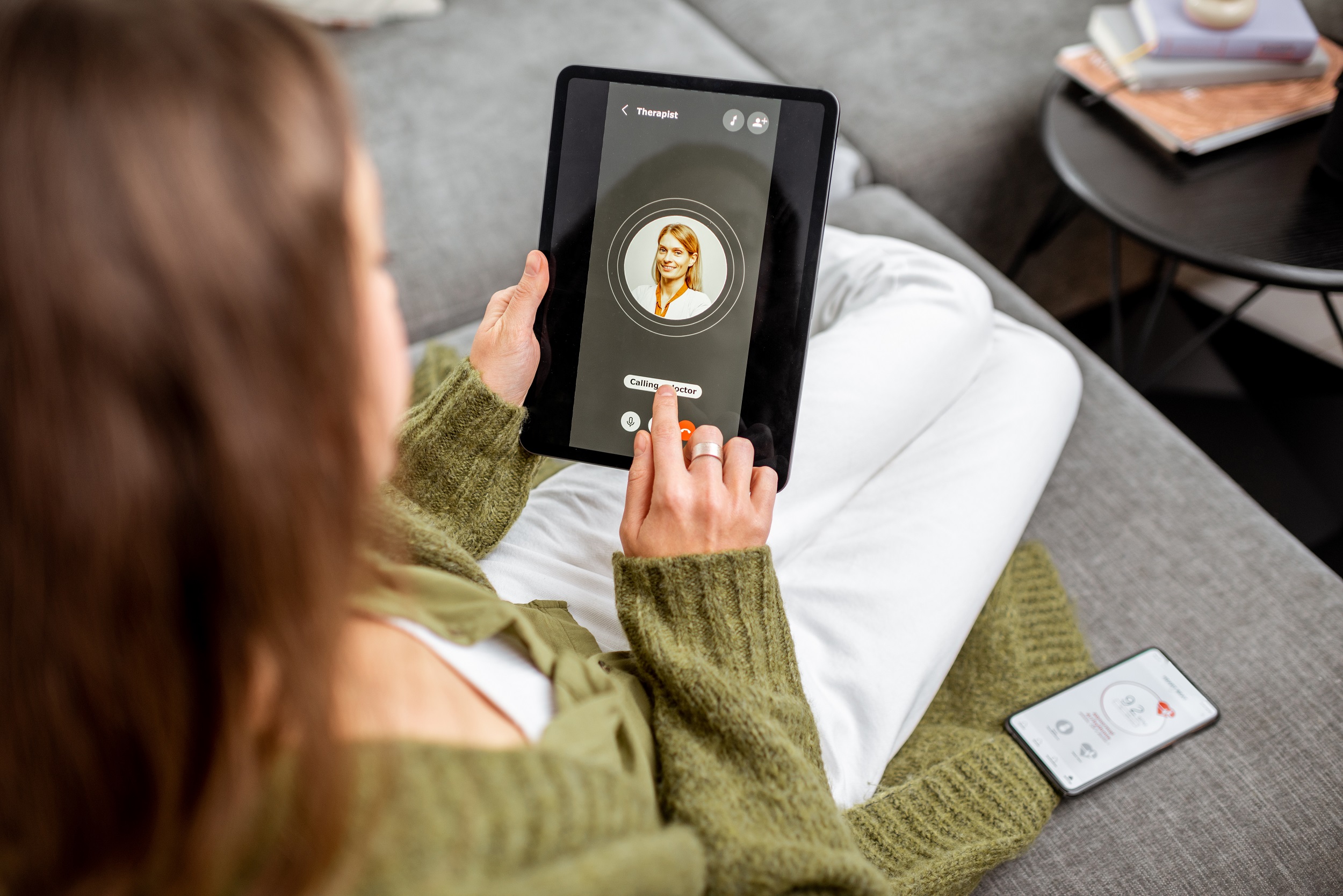Egon Dejonckheere & Peter Kuppens, KU Leuven, Belgium.
Many forms of counseling and psychotherapy still predominantly take place within the therapy room. Yet, once patients leave the therapy room, they sometimes struggle to face their challenges, seize opportunities to get better, and implement what they learned in session. Evidence shows that therapeutic practice can greatly benefit from having direct access to information about what takes place in people’s daily lives. Such information can identify ways to intervene, and effectively close the gap between counseling sessions and real life.
Today’s ubiquity of smartphones, activity trackers and other mobile devices opens up exciting opportunities in this regard. It paves the way for counselors to obtain insights into the daily routines of their clients, and complements clients’ recollections of their life in therapy sessions. The use of mobile technology between sessions provides therapists with a direct and continuous stream of information about people’s real-life experiences, and can improve possibilities to intervene therein.
Regarding assessment, therapists can use mobile technology to have patients repeatedly report on their momentary experiences of relevant symptoms or personal strengths as they happen in daily life. In so-called experience sampling platforms, practitioners can design short surveys that are tailored to each client’s specific complaints or needs. When patients complete such surveys, they provide therapists with a fine-grained stream of in the moment information about the patient’s life that is less confounded by possible memory biases.
One freely available experience sampling platform is m-Path, which we developed in recent years. Experience sampling applications like m-Path can be used for counting the frequency of debilitating behaviors (e.g., binge episodes, panic attacks, intrusions or compulsions, self-harm rituals, etc.), detecting temporal patterns (e.g., the client’s depressive feelings typically peak in the morning, but clear up during the day), or getting insight in the antecedents and consequences of one’s complaints (e.g., the client’s anxiety levels typically rise during social interactions). In the role of scientist-practitioner, the therapist can analyze and summarize these data in intuitive graphs and charts prior to a session. During their actual meeting s/he can feed the established patterns back to the patient. Such an approach allows therapists to refine their diagnoses and put the patient’s complaints into context. Likewise, mobile technology also facilitates process monitoring throughout the entire course of therapy. Here, therapists are also able to closely evaluate treatment effects (e.g., routine outcome monitoring), because they receive immediate feedback about the efficacy of their interventions and are able to adjust these in due time in case of a client’s status quo.
Therapeutically, mobile technologies may also offer benefits, and these are situated at two levels. First, evaluating, labeling, and reporting about one’s complaints may boost patients’ sense of empowerment, as simply paying attention to symptom fluctuations and their causes promotes insight and coping capacity. Similarly, mutually discussing mood or symptom patterns and regularities during counseling sessions may strengthen the alliance between the patient and practitioner. Second, the assistance of mobile technology in therapy can also be more direct. Mobile and automatic reminders in everyday life about the exercises discussed during a counseling session increase the client’s therapeutic adherence between meetings (e.g., the client gets a daily reminder to complete the discussed relaxation exercises). Moreover, many applications with these so-called just-in-time adaptive interventions also provide evidence-based exercises themselves for a growing variety of psychological complaints (e.g., exposure, breathing exercises, mindfulness clips, etc.). As clients typically carry around their mobile device everywhere they go, they can consult and try-out these exercises with the simple tap of a fingertip. In this way, counselors not only valorize their therapeutic impact beyond the counseling room, they also have real-time info about the use and efficacy of interventions (e.g., do the relaxation exercises actually mitigate the client’s stress levels?).
In sum, the assistance of mobile technology in therapy has promising potential, from both the assessment and therapeutic perspectives. In terms of efficacy, real-life assessment via mobile devices provides counselors with detailed case information and allows for continuous progress monitoring. In terms of efficiency, collecting information in daily life creates room for other therapeutic practices within counseling sessions. Similarly, clients can already monitor themselves before actual therapy starts, creating valuable baseline information for clinicians and reducing waiting lists. Regarding therapeutic interventions, many applications are readily available in the app store for everyone to use. Nevertheless, when proposing mobile (self-help) apps to a client, make sure to examine whether they are scientifically grounded and comply with applicable privacy regulations.
Practical recommendations
- Personalize when possible. When assessing clients’ mood or symptoms repeatedly in daily life make sure your survey and assessment schedule are tailored.
- Keep it simple. Do not make the repeated surveys too long or the assessment frequency too high. If the protocol is too burdensome, clients will not comply.
- Try it yourself. There are a lot of therapeutic apps on the market, but not all of them are backed up by scientific research. Before recommending an app to a client make sure you have tried it out yourself and investigate whether it is evidence-based. Relatedly, see whether the app stores sensitive information in a protected and private way. Some countries provide lists or recommendations on mental health apps such as for instance in the UK, Europe, or in the USA.
- Take a look. Prior to the session, take enough time to inspect the data collected by the client. Many platforms guide therapists in their analysis, with intuitive dashboards that provide various graphs or charts.

